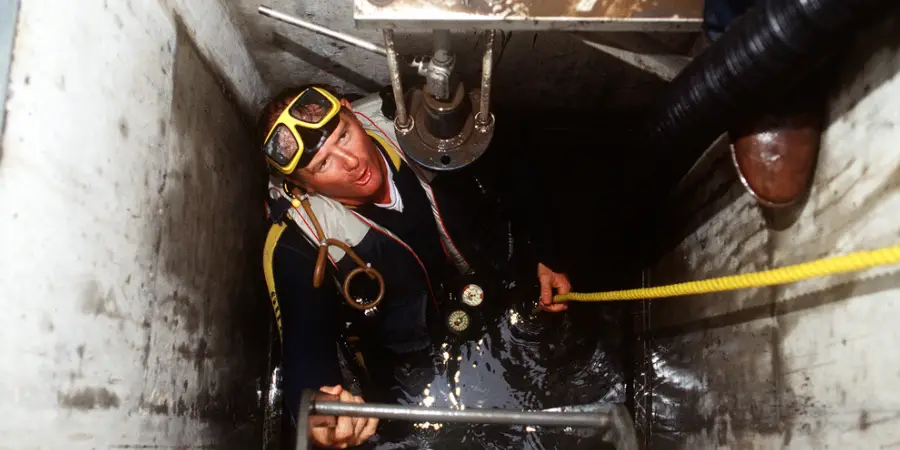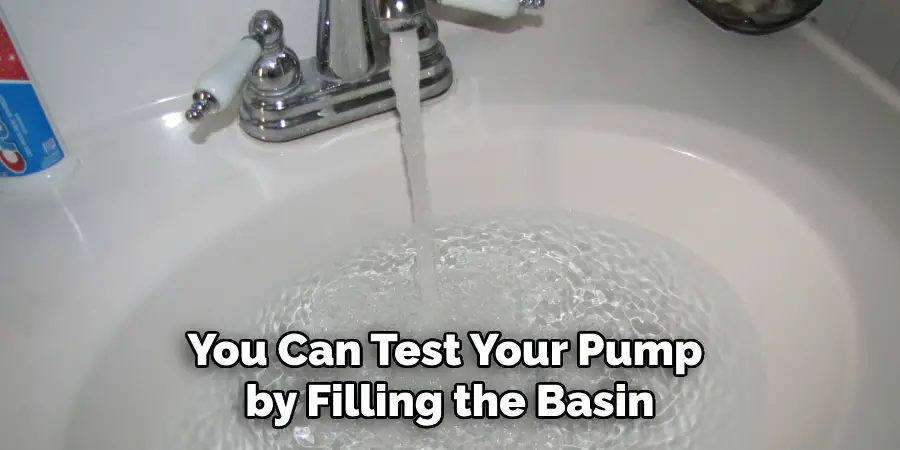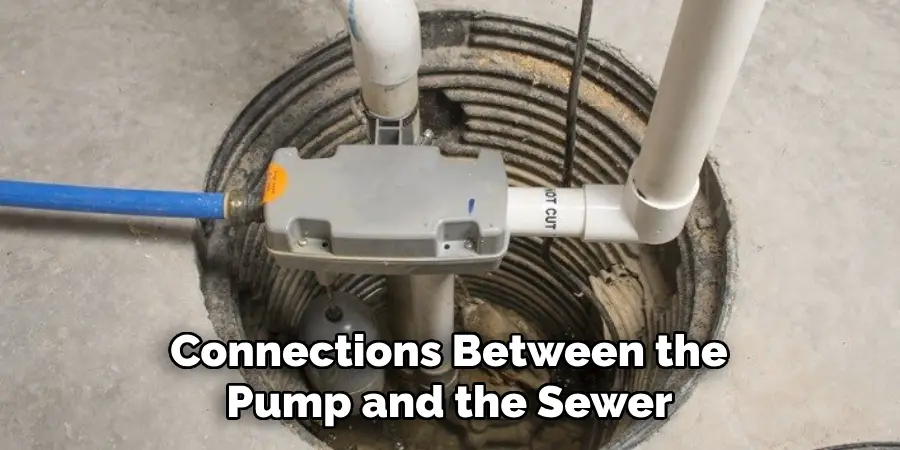Are you ready to take on the challenge of installing an ejector pump? It can be intimidating, but don’t worry! Here, we’ll discuss what an ejector pump is, why it’s important for disposing of wastewater properly, as well as safety precautions to follow before beginning any work and during install.

So don’t let yourself feel overwhelmed; by the end of this post, you’ll have all the information needed for the successful installation of your new ejector pump!
Installing a pump can often be daunting for those not familiar with the process, but it doesn’t have to be! In this blog post, we’ll give you all the information you need to properly install an ejector pump in no time. We’ll walk through step-by-step instructions on how to install an ejector pump and provide tips for ensuring a successful installation job. With the right knowledge and preparation, anyone can easily handle this project—so keep reading if you’re interested in setting up an ejector pump of your own!
Why May You Want to Install an Ejector Pump?
1 . To Avoid Sewage Backup
An ejector pump is a device that helps to push sewage from lower levels of a building up to the main sewer line. If you have a basement or an area in your home that is below the level of the main sewer line, installing an ejector pump can help prevent sewage backup. This backup usually occurs when there is a blockage in your pipes, causing wastewater to collect and potentially overflow into your home. By installing an ejector pump, you can avoid this unpleasant and unsanitary situation.
2 . To Increase Your Home’s Value
If you are planning to sell your home in the future, having an ejector pump installed can increase its value. This is especially true for homes with basements or lower levels that require a sewage system. Potential buyers will see the added convenience of having an ejector pump already installed and may be more willing to pay a higher price for your property. Additionally, having an ejector pump installed can also make your home more attractive to buyers who are looking for a property with a lower risk of sewage backup.

3 . To Prevent Costly Damage
Sewage backups can cause significant damage to your home and its foundation. Not only is the cleanup process expensive, but it can also lead to structural issues if left untreated. By installing an ejector pump, you are taking a proactive step in preventing these potential damages and saving yourself from costly repairs in the future. Additionally, having an ejector pump can also help prevent water damage from flooding in your basement or lower level.
4 . To Comply with Local Building Codes
In some areas, it is required by law to have an ejector pump installed in homes with basements or below-grade plumbing. This is to ensure the proper disposal of sewage and prevent any health hazards for both homeowners and their communities.
By installing an ejector pump, you are not only following local building codes but also doing your part in maintaining a safe and healthy environment for yourself and those around you.
How to Install an Ejector Pump in 5 Easy Steps
Step 1: Gather Your Tools
Before you begin installing an ejector pump, make sure that you have all the necessary tools and materials. These may include a sump pump basin, PVC pipes and fittings, a hacksaw or pipe cutter, pipe glue, concrete mix, a shovel, and safety equipment such as gloves and goggles.

Step 2: Choose the Location
The first step in installing an ejector pump is to choose the location where it will be installed. This should be a place that is easily accessible for maintenance and repair, but also far enough away from living or working spaces to avoid any unpleasant odors. The chosen spot should also have easy access to a power source and plumbing lines.
Step 3: Dig the Hole
Once you have chosen a location, it’s time to start digging the hole for the pump basin. The hole should be deep enough to accommodate the entire basin, including any necessary pipes and fittings. It is recommended to dig a hole at least two feet deep and wide enough to allow for easy installation and maintenance.
Step 4: Install the Pump
Now that you have prepared the location and dug a suitable hole, it’s time to install the pump. Place the basin in the hole and make sure it is level. Then, connect any necessary pipes and fittings according to your specific installation instructions. Make sure to use PVC glue to secure all connections properly.
Step 5: Cover and Test the Pump
After the pump is installed, cover the hole with concrete mix to secure the basin in place. Once the concrete has dried, you can test your pump by filling the basin with water and turning it on. If everything is working correctly, you have successfully installed your ejector pump! Remember to schedule regular maintenance and inspections to ensure its proper functioning.

Some Extra Tips to Install an Ejector Pump
1 . Get the Right Tools
Before you begin the installation process, make sure to have all the necessary tools at hand. You will need a shovel, wrenches, pliers, pipe tape, a hacksaw, and safety gear such as gloves and goggles. Having all these tools ready will ensure that your installation process goes smoothly.
2. Choose the Right Location
When it comes to installing an ejector pump, location is key. You want to make sure that the pump is installed in a place where it can easily access wastewater from your home. It should also be placed on a stable and level surface.
3. Follow the Manufacturer’s Instructions
Every ejector pump may have slightly different installation instructions, so it is important to carefully read and follow the instructions provided by the manufacturer. This will ensure that your pump is installed correctly and will function properly.
4. Use Secure Connections
It is important to make sure that all connections between the pump and the sewer line are secure. This will prevent any leaks or clogs in the system, which could lead to costly repairs down the road.

5. Test the Ejector Pump
Once the pump is installed, it is important to test it before using it regularly. This will ensure that everything is working properly and there are no issues with the pump or its connections. Also, make sure to regularly maintain and clean the pump to keep it functioning effectively.
6. Contact a Professional
If you are not confident in your ability to install an ejector pump or encounter any issues during the installation process, it is best to contact a professional plumber for assistance. They have the necessary skills and expertise to properly install an ejector pump and ensure that it is working correctly.
Frequently Asked Questions
What Precautions Should be Taken When Installing an Ejector Pump?
When installing an ejector pump, safety should always be a top priority. Here are some important precautions to take:
- Always turn off the power to the area before beginning any work on the pump. This will prevent any accidents or electrocution.
- Wear protective gear, such as gloves and eye protection, to avoid getting injured by sharp edges or chemicals.
- Make sure the pump is properly grounded to avoid electrical hazards.
- When working with sewage, make sure to take appropriate precautions and dispose of waste properly.
- Follow the manufacturer’s instructions carefully to ensure proper installation and avoid any potential hazards.
What Tools are Needed for Installing an Ejector Pump?
The tools needed for installing an ejector pump may vary depending on the specific installation requirements, but here are some common tools that you may need:
- Wrench or pliers to tighten bolts and nuts
- Screwdriver to secure electrical connections
- Hacksaw or handsaw to cut pipes to the correct length
- Pipe cutter for clean and precise cuts
- Tape measure to ensure proper placement and fit
- Level to make sure the pump is installed correctly
Can I Install an Ejector Pump Myself?
Installing an ejector pump can be a complex and potentially hazardous task. It is recommended to hire a professional plumber or contractor for proper installation. They will have the necessary knowledge, tools, and experience to ensure safe and efficient installation.
Conclusion
Installing an ejector pump is a practical and beneficial addition to any home with a basement or lower level. Not only does it prevent sewage backups, increase your home’s value, and prevent costly damage, but it also helps comply with local building codes. If you are considering installing an ejector pump, be sure to consult with a professional plumber for the best installation options and to ensure that it meets all necessary requirements.
Now you know how to install an ejector pump! So if you want to avoid sewage backup, increase your home’s value, prevent costly damage, and comply with local building codes, installing an ejector pump may be the right choice for you. Contact a professional plumber today for more information on how to install an ejector pump in your home.

